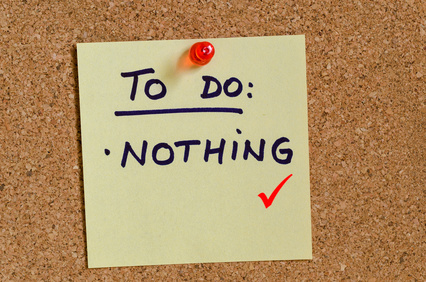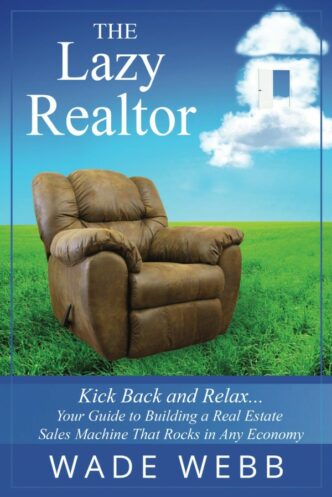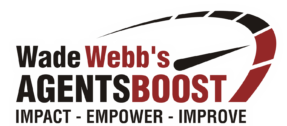The Fine Art Of Doing Nothing ( On Purpose )
- Facebook Reviews: What REALTORSⓇ Need To Know - October 25, 2017
- The Art Of Negotiation - October 18, 2017
- The Top Agents Daily Checklist - October 11, 2017

WHY YOU NEED TO DO NOTHING
We live in a Fitbit, To-Do, pack-it-in, life-is-short, ROI world. And it’s not how we were designed. Sure, we all value initiative, hard work and results – pillars of modern society. But, here’s the rub: Being busy, always working, and struggling to achieve more will inevitably back-fire. I know – I’ve been there. When I launched my coaching programs three years ago it felt like I’d taken on a mountain of work ON TOP of the mountain I already had. Yes, I wanted to get coaching off the ground. The problem is I hadn’t changed my behavior or taken anything off my plate. I was running with the errant thought “I’ll just find a way to make it happen.”
Within weeks I was sloughing through 12 hour days and feeling like I was back in the real estate sales, cranking out back-to-back listings and sales and living on drive-through meals and coffee. The only difference was I was 25 years older, didn’t drink coffee and only frequented drive-throughs in moments of weakness. What I needed was down time—an appreciation for doing nothing. I was ignoring the warning bells telling me a break from my knee-jerk workaholic disease would be good medicine and not a waste of time. Sometimes, doing nothing is the best medicine. It helped me to understand we are designed to hunt and hibernate.
WHY DOING NOTHING IS REALLY DOING SOMETHING
We are designed to hunt and hibernate. Work hard, overcome resistance, make stuff happen and then… rest. It’s the cycle all athletes build their performance on. You should as well. When you’re in hunt mode, your brain fires off the hormone Cortisol (along with Adrenaline) to get bursts of energy, reduce sensitivity to pain – even improve your memory. And then you need to chill. Prolonged periods of stress, keeps Cortisol levels up and can lead to decreased cognitive performance, higher blood pressure, decreased bone density, increased fat and hair loss (I added that one)…need I go on? So, while hunting is good, hibernating is even better. When you put the two together you have a perfect duo for long-term productivity and a healthy life.
ENTER THE RELAXATION RESPONSE
Forty years ago, cardiologist Herbert Benson (and founder of Harvard’s Mind/Body Medical Institute) made something old new again. He recognized that with a simple breathing exercise, muscles relax, organs slow down, and blood flow increases to the brain. A perfect trifecta of good health. Effective breathing triggers the body to return to a pre-stress state and allows it to heal.
The Relaxation Response was more designed for disease prevention and cure (as a side note, Benson first published his results in the American Journal of Psychology with the mouthful of a title “A wakeful hypo metabolic physiologic state”) – Benson would document impressive results for conditions, such as: fibromyalgia, gastrointestinal ailments, insomnia, hypertension and anxiety disorders (but not hair loss). Good old, daily relaxation is actually good medicine for anyone’s health. Let’s look at 5 easy ways to get started (even if you’re a high achiever and hate the lotus position).
INSTRUCTIONS FOR THE HIGH ACHIEVER
Someone wisely once said “Advice is cheap – doing is what takes work”. My recommendations will take some work – the good news is, not very much. The Clutter Cleanse takes 5 minutes (every week), Zone Out 3 minutes, Escape into a novel 15. You’re probably spending more time reading about happy people leading wonderful lives on Facebook every day than it will take to complete any one of these practices.
Here are 5 ways of doing nothing and making it a natural part of everyday, just like brushing your teeth and syncing your Fitbit.
#1 Do a Clutter Cleanse.
This is a no brainer – reducing clutter increases brain capacity. Think of it this way: when you see something “unfinished”, like a half-read book, sticky note, orphan computer cable, or client file, you’ll think about it. “I should deal with that.” “Ugh, not now…I’m swamped.” “Right. I’ll get to it tomorrow.” “Yup, that’s it – tomorrow.” ….and on it goes for weeks.
#2 Zone Out
Here’s a simple 3 minute mind-break for midday. Zone out. Start by picking one object (like a pen, or coffee cup) and giving it all your attention. Focus on slowing your breathing and enjoying a full exhale/inhale rhythm. Let the rest of your attention fall away. It’s like a mini-vacation from thinking and doing – I always feel more relaxed and ready to focus on the next task.
#3 Escape into a novel
I love having a fun who-done-it on the go for some mindless mental entertainment. In fact, knowing I have a great read waiting is a good incentive for me to shut down whatever I’ve been working and to start wrapping up my day. Fifteen minutes before bed is all it takes to make you feel you own your day.
#4 Build Your Unplugged Habit
Use line-ups for coffee, waiting for the bus, or time before a meeting starts to unplug, chill, and restore. Fidgeting with your phone won’t help – there’s lots of time for that. Gaps in your day are invitations to unplug, allow, and re-balance – take them.
#5 Get Into Nature
It’s so simple, but we ignore it – take a walk in nature. Even a patch of green behind your subdivision is all it takes to allow the world to drop away and to recover a sense of belonging and peace. In one study researchers found that even after just one long walk in nature volunteers were more attentive and happier.
Doing nothing might sound counter-productive – even bizarre. But it might just be the most powerful weapon you develop against an already-busy life. Like runners who jog between hard intervals, we all need to pause if we want to show up at 100%, fully present and ready to contribute.
Bonus Tip:
4 STEPS TO RELAXATION
Following is the Relaxation Response technique taken directly from Benson’s book The Relaxation Response:
1. Sit quietly in a comfortable position.
2. Close your eyes.
3. Deeply relax all your muscles, beginning at your feet and progressing up to your face. Keep them relaxed. If you struggle to quiet your thoughts, try starting by relaxing your tongue.
4. Breathe through your nose. Become aware of your breathing. As you breathe out, say the word “one” silently to yourself. For example, breathe in, and then out, and say “one”, in and out, and repeat “one.” Breathe easily and naturally.
Continue for 10 to 20 minutes. You may open your eyes to check the time, but do not use an alarm. When you finish, sit quietly for several minutes, at first with your eyes closed and later with your eyes opened. Do not stand up for a few minutes. Don’t worry about whether you are successful in achieving a deep level of relaxation. Maintain a passive attitude and permit relaxation to occur at its own pace. When distracting thoughts occur, try to ignore them by not dwelling upon them and return to repeating “one.” With practice, the response should come with little effort. Practice the technique once or twice daily, but not within two hours after any meal, since the digestive processes seem to interfere with the elicitation of the Relaxation Response.
So, get out there and… do nothing.
Strength and courage,
Wade
Please share this post using the buttons below...
https://plus.google.com/u/2/113259707478722993209/posts/CDrqz7GFPu1


FIRST 2 CHAPTERS FREE
My book, The Lazy Realtor, is available in Paperback or Kindle format, on Amazon. You can preview it here and I’ll even include these bonus items:

Phone: (250) 212-8220 | Wade@agentsboost.com
